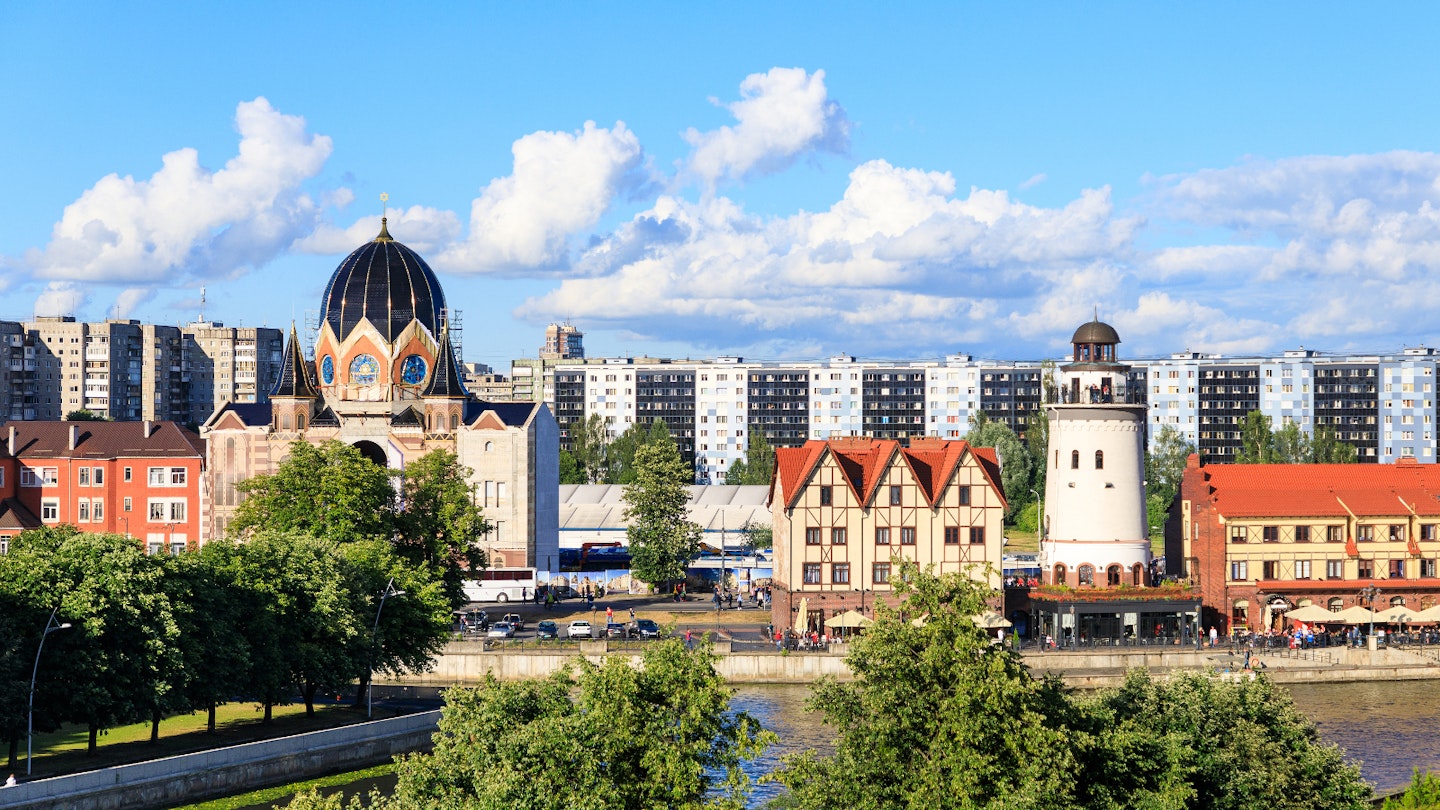Kaliningrad’s New Synagogue
On 8 November 2018, Chief Rabbi Berel Lazar officiated at the consecration of Kaliningrad’s nearly completed synagogue. Sporting a giant dome and twin turrets, this building is an almost exact replica of the cathedral-like 1896 original which stood here until it was destroyed 80 years ago.
Jews were first permitted to settle in what was then known as Königsberg, the capital of the Germanic kingdom of Prussia, in the early 16th century. Notably, relatives of famous individuals, like Woody Allen and British writer David Baddiel, trace their roots back to this region. When Königsberg’s New Synagogue was first built, it served a community of approximately 4,000.
However, the Nazis burned down the synagogue during Kristallnacht in November 1938, followed by the horrors of WWII and ongoing persecution during Soviet times. Amazingly, Kaliningrad remains home to over 3,000 Jews who will utilize the rebuilt synagogue as a place of worship and community center.
The Jewish Museum & Centre of Tolerance
To understand the complex history of Jews in Russia, there’s no better starting point than the Jewish Museum & Centre of Tolerance in Moscow. Housed in the former Bakhmetevsky Bus Garage, designed by avant-garde architects Konstantin Melnikov and Vladimir Shukhov, the interactive exhibitions cover Jewish life in the region from the 4th century to the present day. The displays present a dramatic yet life-affirming record of the struggles and resilience of Jews in Russia throughout history.
During the late 18th century, when Imperial Russia annexed parts of present-day Poland, millions of Jews became part of its population. However, they were restricted to living in small towns or villages known as shtetls, outside major cities. The museum emphasizes aspects of shtetl life, enabling visitors to learn about the experiences of Jews during the Holocaust, Soviet times, and post-Perestroika while also enjoying refreshments at the on-site kosher cafe Alef.
Grand Synagogues
The establishment of permanent Jewish communities in the major Russian cities of Moscow and St Petersburg dates back to the early 19th century, coinciding with the drafting of Jews into the army of Emperor Nicholas I. Despite facing significant persecution, Jews thrived, resulting in the opening of Moscow’s grand Choral Synagogue in 1906. This was the only synagogue in the city to continue operating throughout Soviet times and was famously visited by Golda Meir in 1948.
Other notable Moscow synagogues include the privately built Synagogue on Bolshaya Bronnaya Street, featuring a rooftop restaurant, the Holocaust Memorial Synagogue, and the Maryina Roshcha Synagogue, which is part of the same complex as the Jewish Museum & Centre of Tolerance.
By the 1880s, St Petersburg, then the capital of Imperial Russia, became the central hub of Russian Jewry. This led to the creation of the Grand Choral Synagogue, consecrated in 1893 after 24 years of planning and construction. Boasting Moorish architectural elements, the synagogue features a 47m-high cupola and exquisite decorations inside and out. The compound also houses the Small Synagogue, a shop selling Judaica and kosher goods, and the kosher restaurant Le’chaim.
Jewish Autonomous Region
After the Bolshevik-led revolutions of 1917, the prospects for Jews in the Soviet Union initially improved. Jews began to hold positions in national government and cultural life. However, the deeply rooted antisemitism and Communism’s opposition to religion led to renewed persecution. Stalin’s solution was to create a designated homeland for Jews in the Jewish Autonomous Region (JAO), established in 1928, with Birobidzhan as its administrative center, located approximately 8,200 km east of Moscow.
Life in the JAO was challenging due to the swampy, mosquito-infested landscape. Nevertheless, the promise of a Jewish-governed area attracted around 30,000 settlers before WWII. Today, the Jewish population is significantly smaller, yet it still supports a cultural center named Freud, which includes a small synagogue and history museum. The town displays elements of Jewish heritage, such as the Star of David on buildings, a giant menorah outside the train station, and street names in both Yiddish and Russian. Additionally, there’s a statue honoring Sholem Aleichem outside Symphony Hall, commemorating his evocative tales of shtetls.
Torah in Tomsk
In contrast to the voluntary settlers in the JAO, most Jews who settled in the Siberian city of Tomsk in the 19th century were political exiles or conscripted into the Imperial army. In December 2010, Rabbi Lazar braved sub-zero temperatures in Tomsk to light candles on the menorah outside the renovated Grand Synagogue, built in 1902.
Lazar returned to Tomsk in March 2018 to oversee the transfer of another historic building to the local Jewish community. Over 120 years ago, the Cantonment Synagogue was established by Herzl Tsam, a poor Ukrainian Jewish boy who rose to become a colonel in the Tsar’s army. While the interior of the building is dilapidated, it remains an architectural gem, reflecting Tomsk’s unique traditional Siberian wooden architecture.





